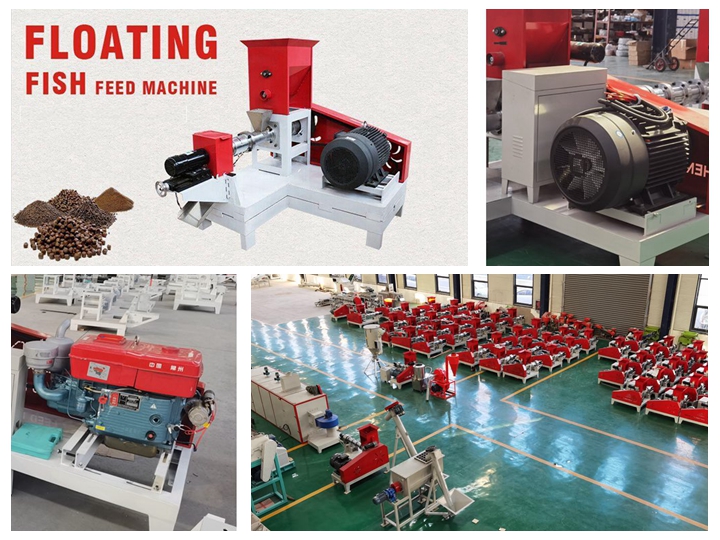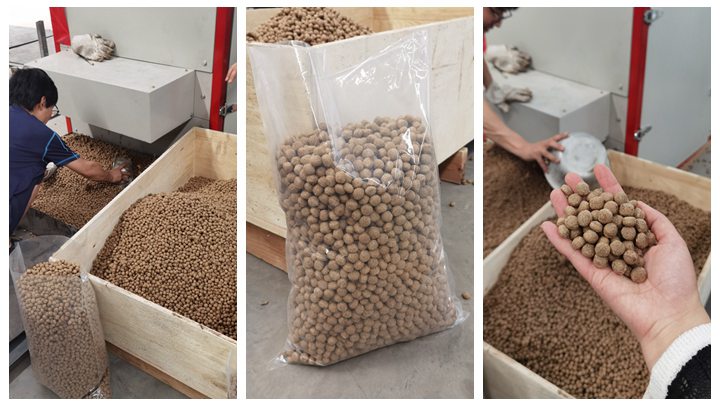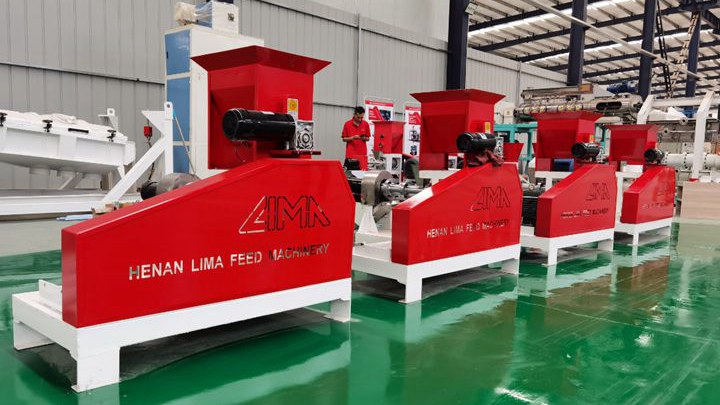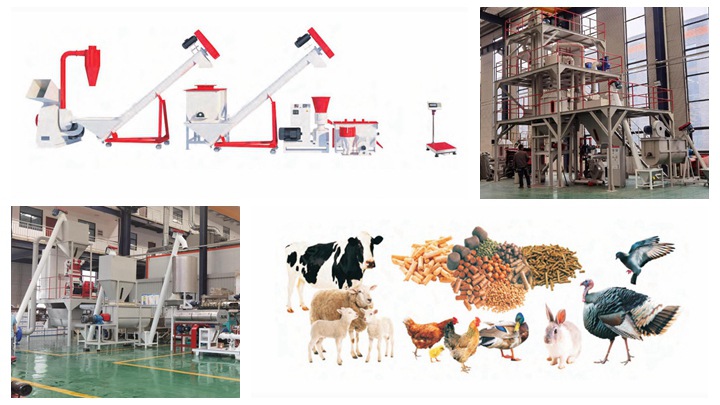
The automatic floating fish pellet production line is generally used in some large-scale production lines, which can effectively improve production efficiency, reduce production costs, and stabilize and improve product quality. The fully automatic floating fish pellet production line can effectively help the factory to realize the modernization of production and has good economic benefits.
.jpg)
Chicken feed production line, including Crusher, Screw Conveyor, Mixer, Pellet Machine, Cooling and Screening Machine, not only make feed for poultry,
.jpg)
Our fish food pellet production line has a variety of configurations to choose from, including domestic small units with a typical output of 50-200kg/h, commercial production lines with 200-500kg/h, and the ultra-large factory production line with 2-5T/h.

The Integral Role of Fish Feed Production. Fish feed production plays a critical role in modern aquaculture, which is an industry responsible for meeting the dietary needs of a significant part of the global population. Understanding the significance of fish feed production is essential for both small-scale farmers and large commercial operations.
.jpg)
This floating fish feed production line adopts fish meal, corn powder and so on as raw materials. This line can be adjusted to produce various shapes of fish feed, shrimp feed and so on. Many production capacities can be chosen according to specific requirements.
.jpg)
Introduction. Understanding the fish feed extrusion process is crucial for anyone in the aquaculture industry. Whether you’re a manufacturer, supplier, or a fish farm owner, knowing how extrusion works can significantly impact your operations.

Key Features to Look For. When choosing the right fish feed pellet machine, consider the machine’s efficiency, reliability, and durability. An efficient machine will consume less energy and produce more pellets per hour, which can significantly reduce your costs in the long run.
.jpg)
Apr 24, 2024 · Floating fish feed making machines are essential equipment in the aquaculture industry, particularly for fish farms and hatcheries. These machines are designed to produce high-quality floating fish feed pellets efficiently and effectively.
.jpg)
Floating fish feed plant in Iran. The floating fish feed plant is a turn-key project for Iran client contracted by RICHI Machinery. This is a compound 1.5-2T/H extruding fish feed production line and a 5-6T/H animal feed production line.
.jpg)
The modernization of fish farming techniques, including the introduction of floating fish feed pellet machine in Philippines, has significantly increased production efficiency. Such advancements make it possible to produce higher volumes of quality feed, contributing to improved fish health and higher yields.

One crucial aspect driving this industry success is the use of specialized machinery for feed production. floating fish feed extruder machine in Australia are now essential in today’s aquaculture landscape. They help producers tailor feeds to suit various fish species, which in turn boosts growth and minimizes waste.
.jpg)
We are a professional manufacturer focusing on manufacturing of fish feed pellet machine. Our floating fish feed pellet mill production capacity covers 40kg to 1000kg per hour. In addition to stand-alone machines, we are also good at designing and integrating complete fish food production lines with flexible configurations.
.jpg)
5-6 T/H floating fish feed pellet making machine. The RCPH150*2 floating fish feed pellet making machine has long service life, mould and gear>5000h. It can produce 100% floating feed and 100% sinking feed only with a kind of screw.
.jpg)
floating fish feed extruder machine price. 3-4T/H floating fish feed extruder price 90,000-110,000USD. Nowadays, most of the world’s aquatic feed production adopts extrusion processing technology, and more and more feed processing enterprises are gradually replacing traditional pellet mills with extrusion fish feed extruders to produce aquatic feed and other special feeds.
.jpg)
05. The twin-screw floating fish feed extruder machine has many advantages, such as wider adaptability of raw materials, wider adaptability of products, better internal and external quality of products, higher output under the same power, better ripening and homogenizing effect, less wear of vulnerable parts, and lower production cost.